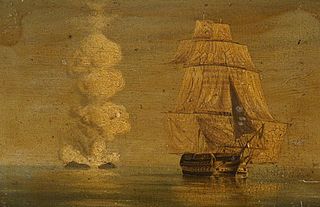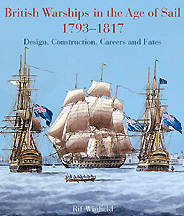This is a list of Royal Navy ship names starting with U, V, W, X, Y, and Z.
This is a list of Royal Navy ship names starting with U, V, W, X, Y, and Z.

HMS Cornwall was a 74-gun third-rate Vengeur-class ship of the line built for the Royal Navy in the 1810s. She spent most of her service in reserve and was converted into a reformatory and a school ship in her later years. The ship was broken up in 1875.

The Nelson-class ships of the line were a class of three 120-gun first rates, designed for the Royal Navy as a joint effort between the two Surveyors of the Navy at the time, Robert Seppings and Joseph Tucker.

The Black Prince-class ships of the line were a class of four 74-gun third rates built for the Royal Navy in the closing years of the Napoleonic War. The draught for this class of ship was essentially a reduced version of the captured Danish ship Christian VII.

HMY Royal Escape was a royal yacht owned by King Charles II. She was the former collier Surprise that had carried the king across the Channel to safety.
HMS Falmouth was a 50-gun fourth-rate ship of the line built for the Royal Navy in the first decade of the 18th century. The ship participated in several battles during the War of the Spanish Succession (1701–15) and the War of Jenkins' Ear (1739–48).

HMS Gloucester was a 50-gun fourth-rate ship of the line built at Deptford by Joseph Allin the elder for the Royal Navy in 1710/11. She participated in the War of the Spanish Succession. The ship was burned to prevent capture after she was damaged in a storm during Commodore George Anson's voyage around the world in 1742.
The Sphinx-class sailing sixth rates were a series of ten post ships built to a 1773 design by John Williams. Although smaller than true frigates, post ships were often referred to incorrectly as frigates by sea officers, but not by the Admiralty or Navy Board.

British Warships in the Age of Sail is a series of four books by maritime historian Rif Winfield comprising a historical reference work providing details of all recorded ships that served or were intended to serve in the (British) Royal Navy from 1603 to 1863. Similar volumes dealing with other navies during the Age of Sail have followed from the same publisher.

HMS Magicienne was the lead ship of her class of two 16-gun, steam-powered second-class paddle frigates built for the Royal Navy in the 1850s. Commissioned in 1853 she played a small role in the Crimean War of 1854–1855 and was sold for scrap in 1866.
A number of ships of the Royal Navy have borne the name HMS Dee, after one or other of the British rivers called the Dee.

The Albacore-class gunboat, also known as "Crimean gunboat", was a class of 98 gunboats built for the Royal Navy in 1855 and 1856 for use in the 1853-1856 Crimean War. The design of the class, by W. H. Walker, was approved on 18 April 1855. The first vessels were ordered the same day, and 48 were on order by July; a second batch, which included Surly, were ordered in early October.

HMS Arethusa was a 46-gun Leda-class fifth-rate frigate built for the Royal Navy during the 1810s. The ship was never commissioned and was converted into a lazarette in 1836. She was renamed HMS Bacchus in 1844 and was further converted into a coal hulk in 1851–52. The ship was sold for scrap in 1883.

HMS Meteor was a Hecla-class bomb vessel built for the Royal Navy during the 1820s. In July 1832 she was renamed Beacon and reclassified as a survey ship, and was sold in 1846.
HMS Larne was an 18-gun Comet-class sloop built for the Royal Navy during the 1820s. She was broken up in 1866.

HMS Harrier was an 18-gun Fly-class sloop, built for the Royal Navy during the 1830s.
HMS Sinbad was a 60-foot (18.3 m) lighter built for the Royal Navy during the 1830s. She was converted into a bomb vessel during the Crimean War of 1854–55 and converted back into a lighter after the war. The ship was broken up in 1866.
HMS Tartarus was a paddle steamer gunvessel, the name ship of her class, built for the Royal Navy during the 1830s.

HMS Merlin was the name ship of her class of three 2-gun paddle packet boats built for the Royal Navy during the 1830s. She was converted into a survey ship in 1854 and then into a gunvessel two years later. The ship was decommissioned in 1858 and was sold into commercial service in 1863.
HMS Medusa was one of three 2-gun Merlin-class paddle packet boat built for the Royal Navy during the 1830s. She was converted into a tugboat in 1861–1862 and sold for scrap in 1872.